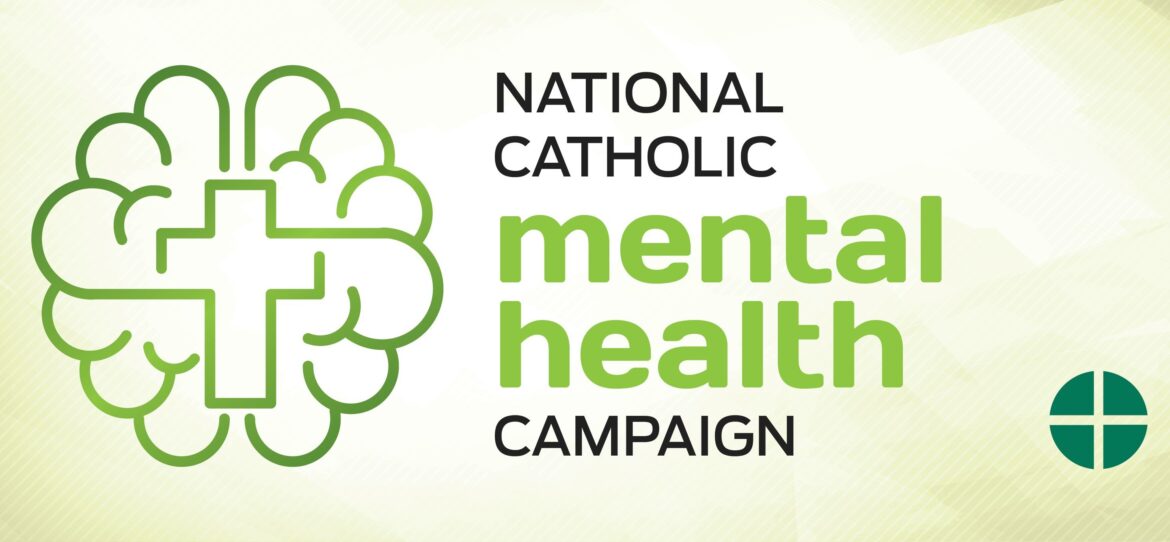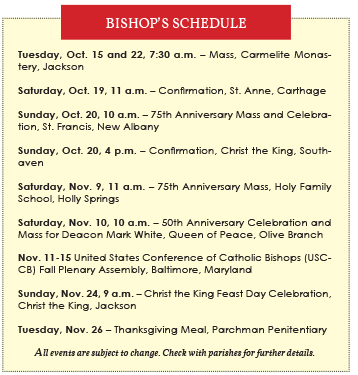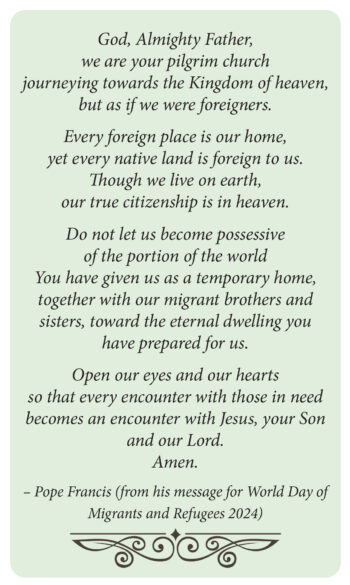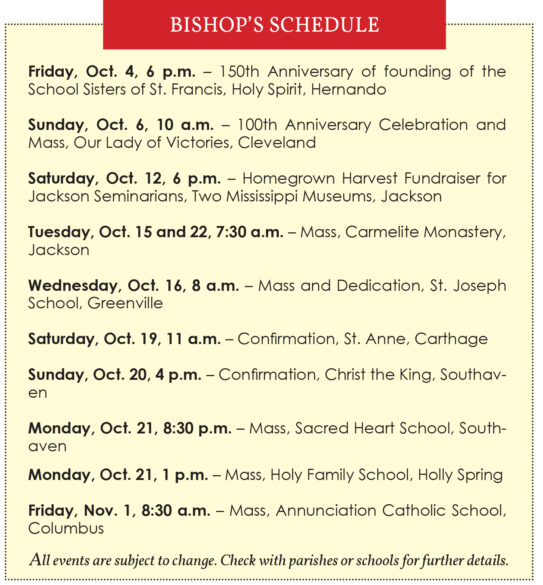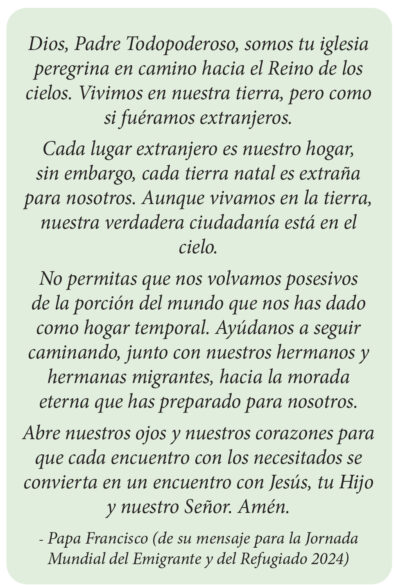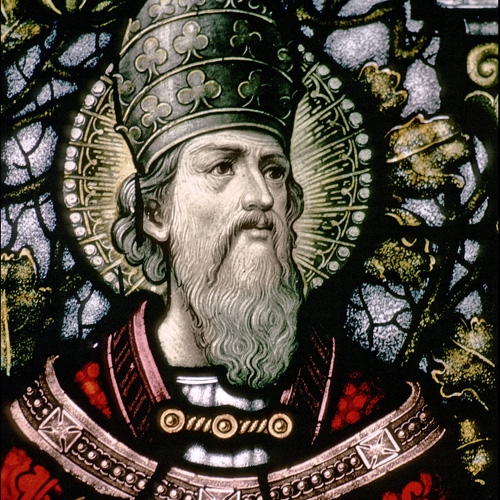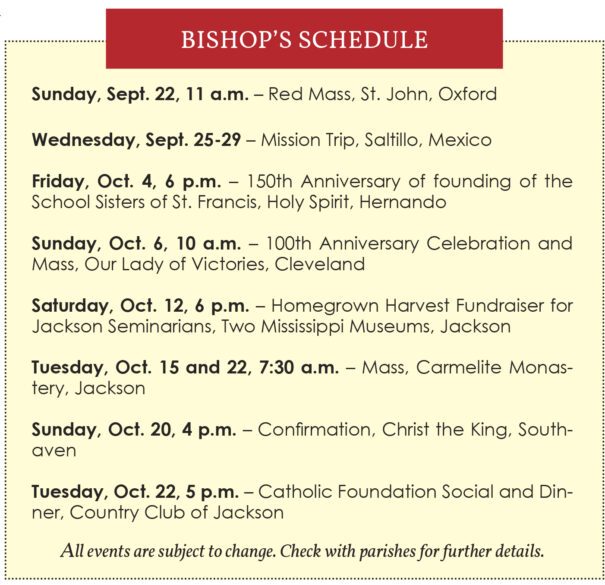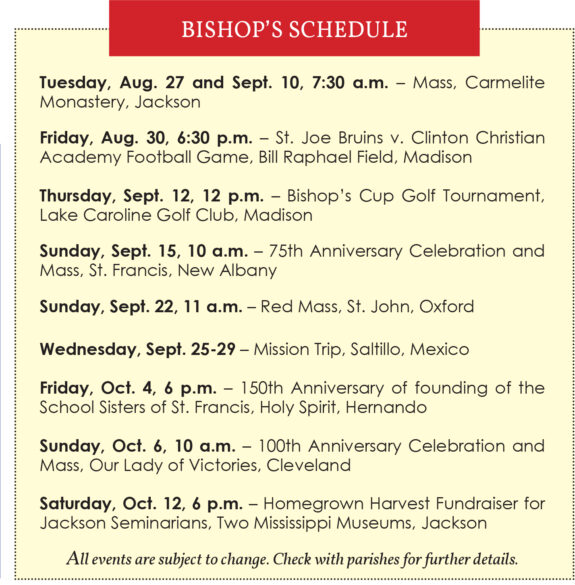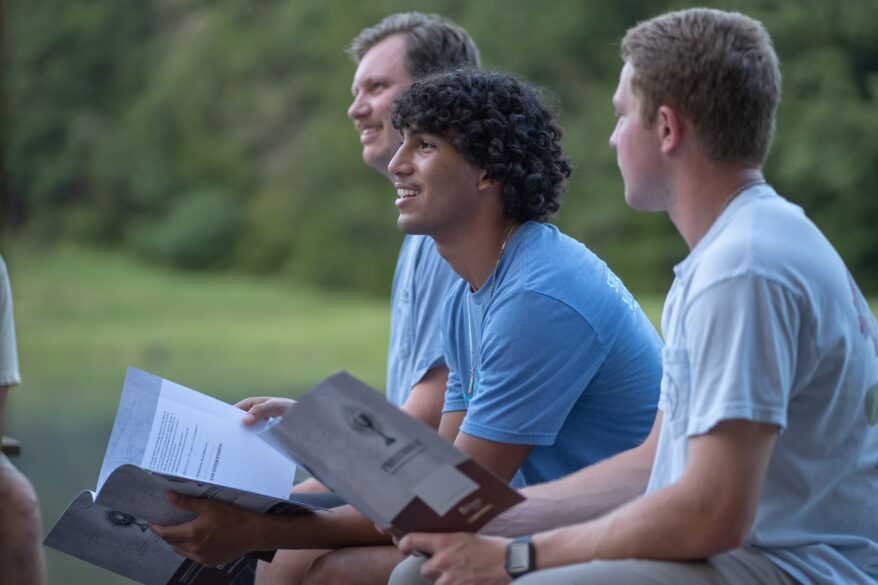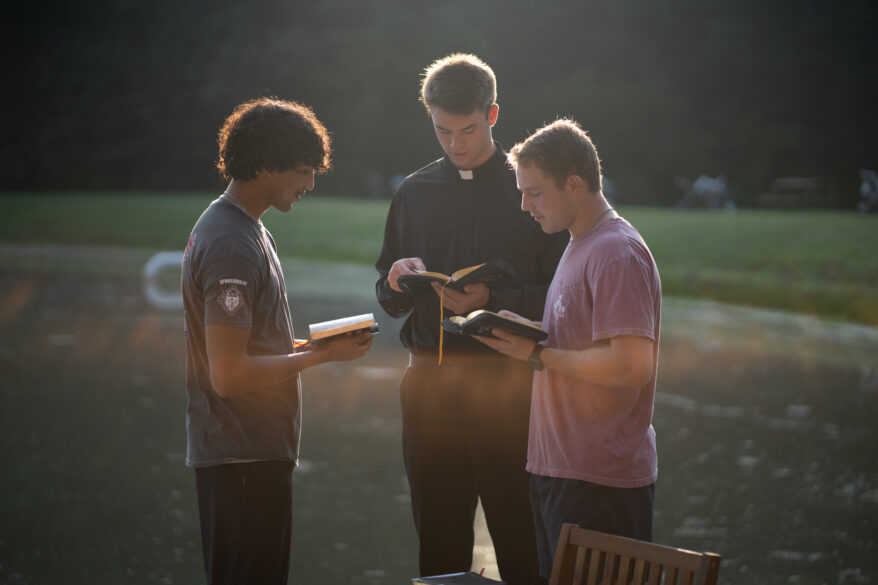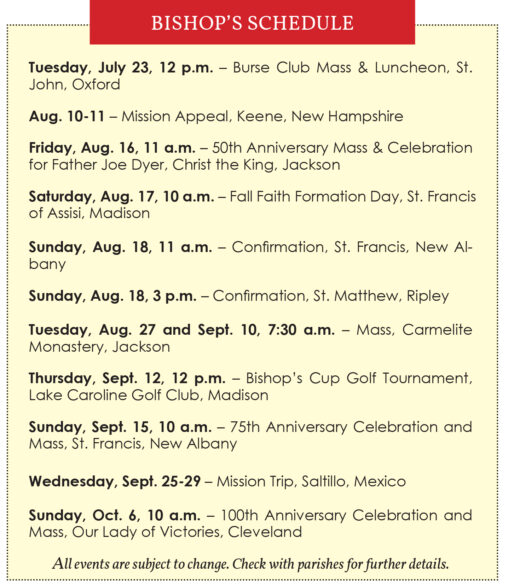Por Obispo Joseph R. Kopacz, D.D.
El Domingo Mundial de las Misiones, que siempre se celebra el penúltimo domingo de octubre, se llevó a cabo el 20 de octubre de este año. Instituido en 1926 por el Papa Pío XI como una segunda colección obligatoria y global, el banquete que es la Jornada Mundial de las Misiones ha sido desde entonces organizado por el Papa, y la mesa puesta por aquellos que responden al llamado de Cristo de “Por tanto vayan y hagan discípulos de todas las naciones” (Mt 28:19) extendiendo una invitación inclusiva a todos los rincones de la tierra. Destinado a celebrarse en todas las parroquias del mundo, lo recaudado beneficia a 1.150 territorios donde el Evangelio aún no se ha recibido, ha sido acogido recientemente o se defiende con valentía frente a la persecución. Es una conmemoración especial que une a los católicos de todo el mundo en oración, solidaridad y apoyo a los esfuerzos misioneros de la Iglesia.
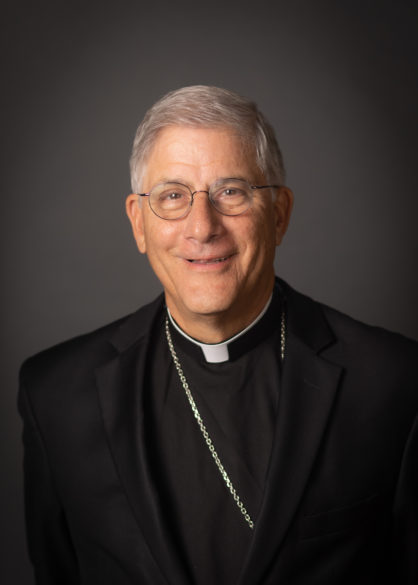
El tema de este año, elegido por el Papa Francisco, tiene sus raíces en el Evangelio de Mateo: “Ve e invita a todos al banquete”, reflejando el llamado inclusivo y urgente a llevar el amor de Dios a todos. Esta es la misión universal: difundir el Evangelio e invitar a todos a experimentar la alegría del mensaje de Cristo. En los últimos tiempos, la pandemia mundial debilitó los esfuerzos misioneros de nuestra iglesia, y la colecta anual del Domingo de Misiones se vio afectada negativamente. Esto creó un efecto dominó por el cual muchos en todo el mundo en las iglesias misioneras sintieron el dolor de la disminución de los recursos que se les presentaban. En los últimos dos años se ha producido un retorno gradual a los niveles anteriores a la pandemia y tenemos la esperanza de que sigamos tendiendo en la dirección de una mayor generosidad y solidaridad en oración.
Recientemente, el Papa Francisco emprendió un increíble viaje pastoral, teniendo en cuenta su edad, a varios países de Asia, entre ellos Indonesia, Singapur y Papúa Nueva Guinea. Durante su homilía en Papúa Nueva Guinea, tocó varios temas que nos proporcionan una comprensión más profunda de la providencia de Dios para todas las naciones y pueblos. Al recordar a los misioneros pioneros en su país, el Papa Francisco compartió estos pensamientos. “Nuestros antepasados en la fe tuvieron el coraje de comenzar, el compromiso de compartir sus vidas en la belleza de estar presentes y la profunda esperanza de hacer crecer lo que comenzaron. Lo hicieron en un espíritu de cercanía a la gente, con compasión y ternura”. Esto es lo que impulsa los campos misioneros de evangelización y reevangelización. Aunque no podemos ser transportados físicamente a los rincones más remotos de nuestra iglesia universal con el Santo Padre, podemos estar allí a través de la oración, la generosidad y una comprensión más reflexiva de la misión que nos ha confiado Jesucristo.
La conexión directa de la Diócesis de Jackson con la experiencia misionera ha sido nuestra relación con San Miguel (Perpetuo Socorro durante los primeros 30 años) en la Diócesis de Jackson.
En Saltillo, México desde hace 55 años. Aunque no son una iglesia en persecución, tampoco son una iglesia joven; Sin embargo, necesitan nuestra ayuda financiera en todas sus capillas y ranchos desérticos donde el desarrollo económico es marginal. Mi reciente viaje anual a San Miguel con el Obispo Louis Kihneman de Biloxi reforzó para nosotros el fuerte vínculo que compartimos con nuestros hermanos y hermanas en otro país y cultura. En la obra del Papa Francisco, la nuestra es una relación marcada por la cercanía, la compasión y la ternura.
El tema de este año para la Jornada Misionera, “Ve y invita a todos al banquete”, armoniza bien con el renacimiento Eucarístico. El banquete del amor abundante de Dios se proclama cada vez que nos reunimos en torno a la mesa de la Palabra de Dios, su Cuerpo y su Sangre, y uno de los objetivos terrenales de la Jornada Misionera es reunir a todas las naciones en el banquete eucarístico, el santo Sacrificio de la Misa. Gracias a todos por vuestra oración y generosidad en nombre de la llamada universal a llevar el Evangelio a todas las naciones.


